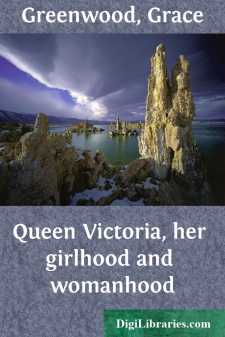Categories
- Antiques & Collectibles 13
- Architecture 36
- Art 48
- Bibles 22
- Biography & Autobiography 813
- Body, Mind & Spirit 142
- Business & Economics 28
- Children's Books 16
- Children's Fiction 13
- Computers 4
- Cooking 94
- Crafts & Hobbies 4
- Drama 346
- Education 46
- Family & Relationships 57
- Fiction 11829
- Games 19
- Gardening 17
- Health & Fitness 34
- History 1377
- House & Home 1
- Humor 147
- Juvenile Fiction 1873
- Juvenile Nonfiction 202
- Language Arts & Disciplines 88
- Law 16
- Literary Collections 686
- Literary Criticism 179
- Mathematics 13
- Medical 41
- Music 40
- Nature 179
- Non-Classifiable 1768
- Performing Arts 7
- Periodicals 1453
- Philosophy 64
- Photography 2
- Poetry 896
- Political Science 203
- Psychology 42
- Reference 154
- Religion 513
- Science 126
- Self-Help 84
- Social Science 81
- Sports & Recreation 34
- Study Aids 3
- Technology & Engineering 59
- Transportation 23
- Travel 463
- True Crime 29
Stories and Legends of Travel and History, for Children
by: Grace Greenwood
Categories:
Description:
Excerpt
MABEL HOWARD AND HER PET.
After all, I think I had more real delight in the noble public parks and gardens of London than in palaces and cathedrals They were all wonders and novelties to me—for, to our misfortune and discredit,—we have nothing of the kind in our country. To see the poor little public squares in our towns and cities, where a few stunted trees seem huddled together, as though scared by the great red-faced houses that crowd so close upon them, one would think that we were sadly stinted and straitened for land, instead of being loosely scattered over a vast continent, many times larger than all Great Britain.
The English government, with all its faults, has always been wise and generous toward the people in regard to their out-door comfort and pleasure. It does not mean that they shall be stifled for want of air, or cramped for room to exercise in. Everywhere over the kingdom, the traveller sees shady parks, pleasant gardens, breezy downs, and wide heaths, open to the public, and as much for the enjoyment of the poor as the rich.
The great Hyde Park of London, has been the property of the crown since the time of Henry VIII. It was formerly walled in, and held deer for royal hunting—but in the reign of George IV. it was inclosed with an open iron railing, and is now only used for drives, promenades, rides, and military reviews.
Connected with Hyde Park, by a bridge over the Serpentine, an artificial river, are Kensington Gardens, beautiful pleasure-grounds attached to Kensington Palace, a building belonging to the royal family.
This palace was for several years the town residence of the widowed Duchess of Kent, and here her illustrious daughter, the princess, now Queen Victoria, was educated.
Strangers sometimes met the young princess walking in the gardens, or saw her sitting under the shade of the trees, accompanied by her mother, or governess. She was always very simply dressed, and always wore a sweet, gentle look on her fresh, young face.
In Hyde Park, every pleasant afternoon, there may be seen hosts of splendid equipages, and hundreds of ladies and gentlemen mounted on elegant horses, riding up and down a long, broad avenue, called "Rotten Row," which is devoted entirely to equestrians.
In Hyde Park stood the Crystal Palace—now removed to Sydenham—where it stands on an eminence, and seems in itself a great mountain of light.
A smaller, but yet a fine park, is that of St. James. King Charles I. walked through this from the Palace of St. James to the scaffold before White Hall, on the morning of his execution. He was very calm, and on his way he pointed out a tree to one of his attendants, as having been planted by his brother, the young Prince Henry, who, if he had lived, would have been king,—and poor Charles might have kept his head; which, doubtless, was of more value to him than all the crowns of all the kingdoms of the world.
King Charles II. made many improvements in this park, and took much pleasure in riding, sporting, and idly strolling here....




